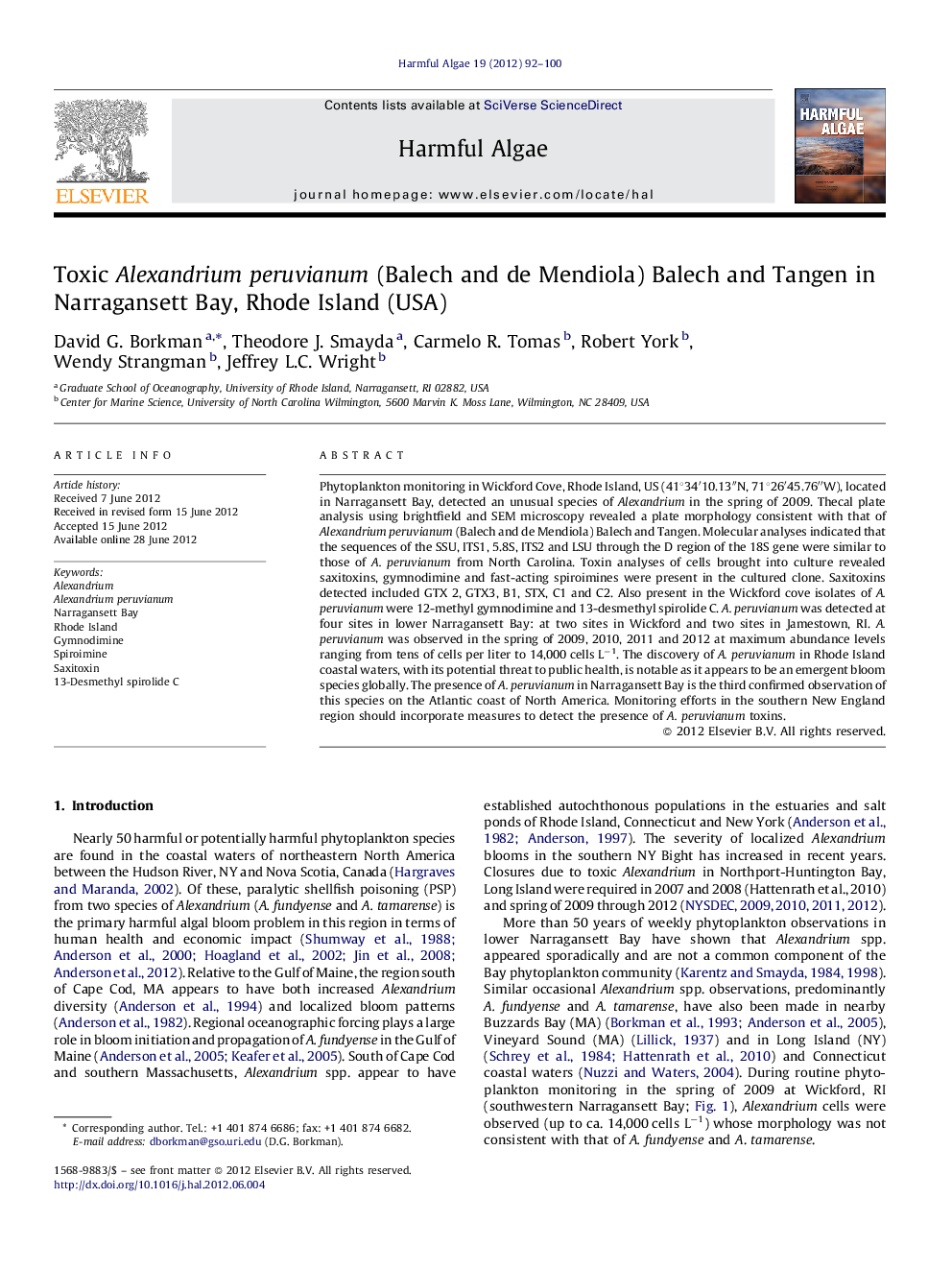| Article ID | Journal | Published Year | Pages | File Type |
|---|---|---|---|---|
| 4545519 | Harmful Algae | 2012 | 9 Pages |
Phytoplankton monitoring in Wickford Cove, Rhode Island, US (41°34′10.13″N, 71°26′45.76″W), located in Narragansett Bay, detected an unusual species of Alexandrium in the spring of 2009. Thecal plate analysis using brightfield and SEM microscopy revealed a plate morphology consistent with that of Alexandrium peruvianum (Balech and de Mendiola) Balech and Tangen. Molecular analyses indicated that the sequences of the SSU, ITS1, 5.8S, ITS2 and LSU through the D region of the 18S gene were similar to those of A. peruvianum from North Carolina. Toxin analyses of cells brought into culture revealed saxitoxins, gymnodimine and fast-acting spiroimines were present in the cultured clone. Saxitoxins detected included GTX 2, GTX3, B1, STX, C1 and C2. Also present in the Wickford cove isolates of A. peruvianum were 12-methyl gymnodimine and 13-desmethyl spirolide C. A. peruvianum was detected at four sites in lower Narragansett Bay: at two sites in Wickford and two sites in Jamestown, RI. A. peruvianum was observed in the spring of 2009, 2010, 2011 and 2012 at maximum abundance levels ranging from tens of cells per liter to 14,000 cells L−1. The discovery of A. peruvianum in Rhode Island coastal waters, with its potential threat to public health, is notable as it appears to be an emergent bloom species globally. The presence of A. peruvianum in Narragansett Bay is the third confirmed observation of this species on the Atlantic coast of North America. Monitoring efforts in the southern New England region should incorporate measures to detect the presence of A. peruvianum toxins.
► Toxic Alexandrium peruvianum is identified via morphology and molecular analysis from Narragansett Bay, RI, USA. ► First record in New England waters and third record on Atlantic coast of North America. ► A. peruvianum found at multiple Narragansett Bay sites and abundance recorded for four consecutive years at one location. ► Six saxitoxin congeners (GTX2, GTX3, B1, STX, C1 and C2) detected in Narragansett Bay A. peruvianum. ► Gymnodimine (12-methyl gymnodimine) & spirolide (13-desmethyl spirolide C) toxins found in Narragansett Bay A. peruvianum.
